How white broke through to Petrograd
The defeat of the red in the Baltic States. Loss of Riga
As noted above, by the spring of 1919, the situation in the Baltic States for the Red Army had deteriorated significantly. The Reds occupied almost all of Latvia, except for the Libau district. However, anti-Soviet forces held out in Estonia and Lithuania. Red troops in Latvia were to allocate additional units to strengthen the flanks, the front was greatly stretched and weak, especially in the Courland direction.
In addition, due to problems with personnel, poor material supply, taking into account that all the attention of the Red Headquarters was riveted on the Southern and Eastern fronts, the decomposition of the Reds in the Baltic States began. The fall of discipline, massive desertions. In the immediate rear of the Red Army, peasant uprisings, which were often led by deserters, became a constant phenomenon. Red terror, forced collectivization and surplus caused discontent of the general population, which earlier sympathized with the Bolsheviks. At the same time, the policy of prioritizing the “national cadres” caused the collapse of the management system. Germans (the most literate and cultural stratum of the population in the Baltic States) were expelled everywhere, replaced by illiterate Latvians. Expelled from housing, staged terror.
At the same time, the enemy of the Reds, on the contrary, strengthened their ranks. In Estonia, the anti-Soviet front was reinforced by the Northern Corps of Colonel Dzerozhinsky (since May 1919, the corps was headed by Major General Rodzianko). The Latvian government enlisted the support of Germany. The second Reich lost the world war, lost all conquests in the East, was destroyed, but Berlin wanted to keep at least minimal influence in the new Baltic states in order to have a buffer to protect East Prussia. Shackled by its defeat and the Entente, Germany could no longer directly intervene in events in the region. However, the Germans relied on local pro-German forces and assisted in the formation of Russian White Guard units in the territory of Kurland and Latvia, supplying them weapon, ammunition and equipment. Fortunately, after the end of the war, huge mountains of armaments and military equipment turned out to be unnecessary. Thus, in Latvia, with the help of the Germans, two Russian volunteer detachments were formed - the “Detachment named after Count Keller” under the command of Avalov and the “Brigade of Colonel Vyrgolic”. Initially, the detachments were part of the volunteer corps of the Most High Prince Lieven. These units became the core of the pro-German Russian Western Volunteer Army commanded by P. P. Bermondt-Avalov.
Also, with the help of Germany, the Baltic Landswehr was formed. It was created from German volunteers from among German soldiers who were promised Latvian citizenship and land, soldiers of the former 8 division (they formed the core of the Bischof Iron Division), Baltic Germans. Volunteers were recruited in Germany, where there were many demobilized soldiers and officers who had no business and no income. Of these, the 1-I Guard Reserve Division was formed, which in February 1919 arrived in Libau. Financed, armed and supplied the Baltic Landswehr Germany. German forces were headed by Count Rüdiger von der Golts, who had previously noted that he commanded the German expeditionary force in Finland, where the Germans helped the White Finns to create their own army and defeat the red Finns. The direct commander of the Landwever was Major Fletcher.
The Germans were able to form strong parts from previously fairly amorphous volunteer units with an iron fist. Among them were the German-Baltic shock battalion of Lieutenant Manteuffel, the detachment of Count Eilenburg, the Latvian detachment of Colonel Ballod, the Russian company of Captain Dyderov, the cavalrymen of Ghana, Drachenfels and Engelgard. They were supported by the Russian Libava volunteer rifle squad of Lieven. Landsver at the beginning of March 1919 of the year beat off the red Windau. After this, the general offensive of the anti-Bolshevik forces began. In April, the Landswehr supplanted the Reds from the western part of Latvia, seized the capital of Kurland, Mitava (Jelgava).
After that, there was a two-month pause, the front stabilized for a while. The positional struggle has begun. Von der Golts fought by the rules, and did not dare to attack Riga on the move, where a large red garrison stood, surpassing the advancing forces by almost twice (7-8 thousand German, Latvian and white Russians against about 15 thousand red). The Germans fought according to the regulations, therefore they tightened the rear and reinforcements, cleaned the occupied territories from the Reds still there (there was no continuous front during the attack, attacked in the main directions, there were vast gaps, territories that were not “cleared out”), brought up artillery, ammunition, set up supply lines. The command also feared that until the sea opened up from the ice, it would be impossible to arrange for the provision of food to Riga. The controversy began between Germany and England, which tried to take the place of the Germans in the Baltic States. In addition, an internal conflict began in Latvia. The Baltic Landeswehr attempted to establish a pro-German regime — the government of Niedra, which would represent the interests of primarily the Germans. The government of Ulmanis was overthrown, but England and France stood up for him. As a result, the Germans were forced to concede to the Entente, and in the summer - in the autumn of 1919, German units and volunteers were evacuated to Germany.
18 May 1919, the Reds tried to launch a counteroffensive in the Riga region. Three days continued heavy fighting, the red parts suffered heavy losses. May 21 came a lull, the Reds made a regrouping, tightened reserves to continue the offensive. The commander of the Landswehr, Major Fletcher, decided to get ahead of the enemy and attacked. The attack was unexpected for the enemy and Landswehr broke through the defense of the Reds. With a forced march, the Landswehr rushed to Riga and caught the red garrison off guard. The Manteuffel assault squad and the Bishov Iron Division broke into the city.
As a result of 22 in May of 1919, Riga was captured by Landswehr and White. The red Latvian riflemen retreated and occupied the defense at the Sebezh-Drissa front. Together with the Russian units attached to them, they formed the 15 Army, which remained part of the Western Front. On the seaside direction, the troops of the 7 Red Army retreated to their original position on the line r. Narova and Lake Peipsi. After this, there was a lull in the fighting. The enemy managed to seize only Narva and a small strip of terrain along the right bank of the r. Narova.
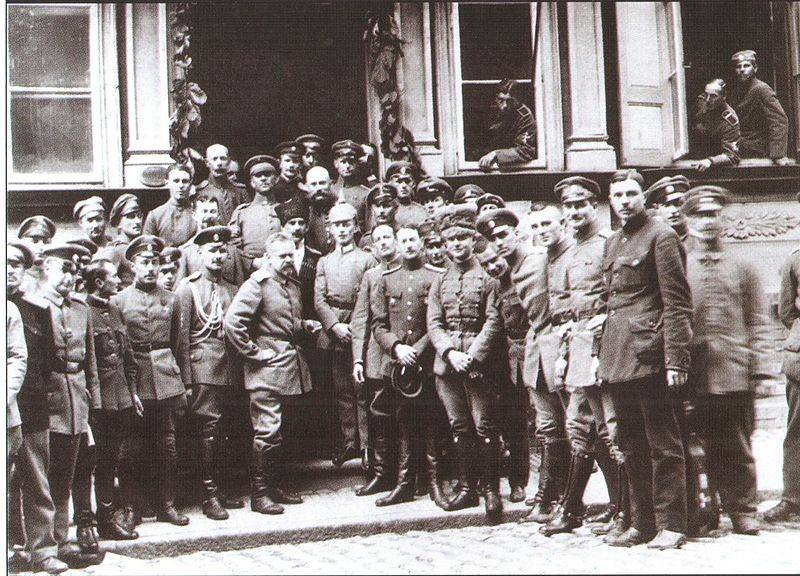
Features of the position of whites in the region
Due to its small size (about 3 thousand people), the Northern Corps could play only a supporting role. At the same time, the White understood that it was necessary to form a new front to help Kolchak's army. Whites in the north-west of the country could divert the Red Army with their attack, draw the Reds from the Kolchak front. Such a front was to become a Finnish-Estonian with the task of attacking Petrograd. On this front, Yudenich (in the years of World War II, he was the commander of the Caucasian Front), who was in Finland and was considered the head of the White movement in North-West Russia (though not all whites recognized him), there were about 5 thousand, and corps in Estonia. At the same time in Finland, the formation of white parts was hampered due to political and material difficulties. The Finns demanded that the whites officially recognized the independence of Finland, as well as the accession to Finland of Eastern Karelia and parts of the Kola Peninsula. And the Entente was in no hurry to support whites in the North-West of Russia, preferring to rely here on the new governments of Finland and the Baltic republics.
Kolchak approved Yudenich as commander of the new front. Moreover, his small forces were scattered throughout the Baltic. White refugee organizations in Finland, where the local authorities did not allow the formation of units of Russian volunteers, and prevented officers who wanted to get into the Northern Corps to legally sail from Finland to Estonia; Rodzianko's corps in Estonia, under the operational control of the Estonian commander-in-chief Laidoner, the Estonians accepted the help of the whites, but were suspicious of them, suddenly they would oppose their independence; Prince Lieven’s detachment in Latvia and the pro-German Western Avalov Volunteer Army, which did not want to subjugate Yudenich and planned to take power in the Baltic States herself, suppressing local nationalists.
At the same time, the situation of scattered white detachments and organizations in the Baltic states was complicated by the fact that several "independent" states — Finland, Estonia, Latvia, Lithuania, and Poland — had just emerged here, in which Russophobia and chauvinism flourished. Germany, France, England and the USA also tried to influence the situation in the Baltic states. So, in Revel (Tallinn) sat the head of all allied missions in the Baltic, the English General Gough, who wanted to act as the sovereign master of the entire region. Moreover, the interests of the Russian whites, Yudenich stood in his last place. The British redrawn the map of the region for themselves and did not intend to help the Russians recreate a "single and indivisible" Russia. And Yudenich was forced to recognize the supreme role of the Entente in the region. At the same time, the British tried to destroy the remaining remaining Baltic forces fleet, according to the old tradition, trying to secure for the future full dominance on the Baltic Sea. In May, the British attacked Kronstadt with torpedo boats. The operation as a whole failed. At the same time, the Baltic Fleet sailors became embittered, pulled themselves up and no longer tried to go over to the white side.
Until the Red Army gained the upper hand, all the many contradictions were smoothed out by the necessity of confronting a strong common enemy. As soon as the Reds pressed, so all the contradictions and controversial issues immediately emerged. The White Guards unexpectedly found themselves in a "foreign land" and in the position of "poor relatives," the petitioners.
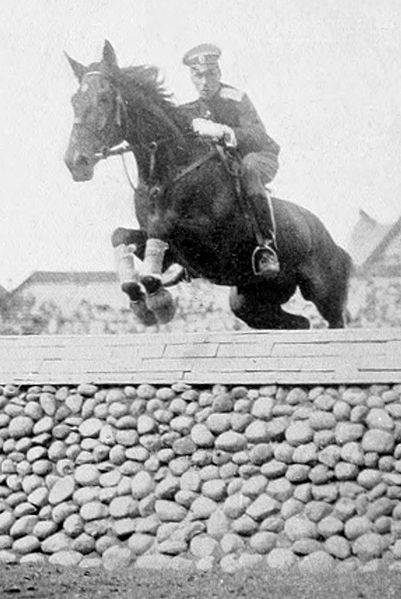
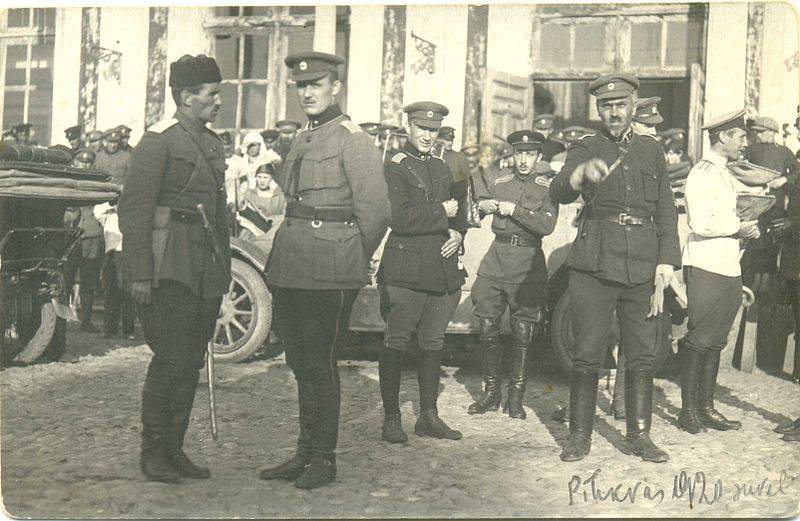
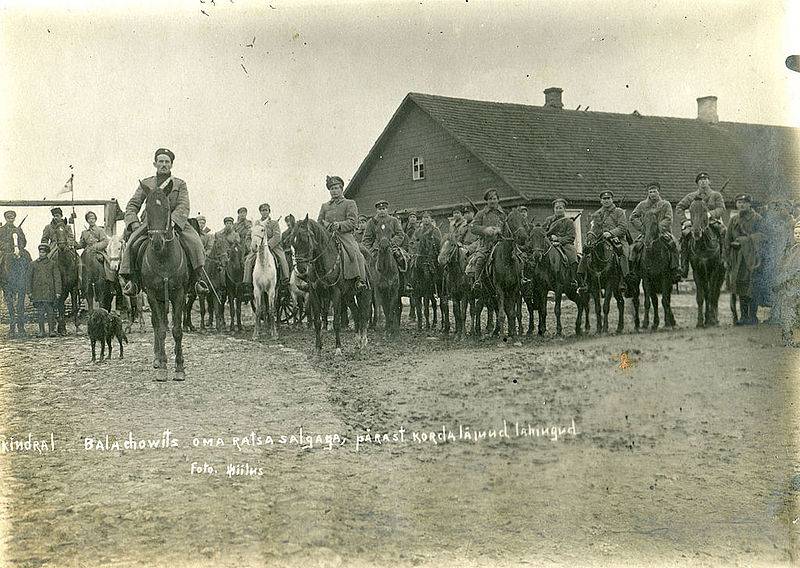
Preparing the attack of the Northern Corps
In January-April, 1919, white units raided the territory of Soviet Russia from Estonia. They were successful. This prompted part of the corps command to develop a plan for a major offensive operation. Moreover, the whites' offensive was prompted by their position in Estonia. It was necessary to prove to the Estonian authorities the feasibility of the existence of the White Guard units at the expense of Estonia and their combat effectiveness. The Estonian press constantly suspected whites of seeking to liquidate the independence of Estonia, demanding their disarmament. The northern corps needed to capture a bridgehead in the territory of Russia in order to get an opportunity to increase its strength and get out of its dependent position.
The commander of the 2 corps brigade, General Rodzyanko, Colonel Vetrenko, the commander of one of the detachments and the lieutenant Vidyakin, chief of staff of the 2 brigade, were directly involved in developing the plan of operation. In April, the plan for the summer offensive of the corps was approved by the Estonian commander-in-chief, Lydonon. At first the offensive did not have the decisive task of seizing Petrograd. The Whites planned to take the Gdov, force the rivers of Plyussa and Luga, clasp Yamburg from the rear, cut the Petrogradskoe highway and the Yamburg-Gatchina railway, surrounding the Yamburg enemy group.
Thus, the whites had to capture a sufficient springboard in the Russian lands in order to get out of dependence on Estonia and expand the ranks of the white formations. At the same time, the Pskov direction of continuing the operation was considered more promising than the Petrograd one, since the population of the Pskov and Novgorod gubernias, apparently, could have more sympathy for the White Guards than the St. Petersburg proletariat. However, the Estonians themselves were going to attack in the Pskov direction and redeployed the 2 th brigade of the Northern Corps from the Yurva direction to Narva, where the 1 th brigade already stood. Therefore, almost all the forces of the Northern Corps (with the exception of one battalion of the Talab regiment, which remained in the same location) were concentrated south of Narva by the beginning of the offensive. Only about 3 thousand bayonets and sabers with 6 guns and 30 machine guns.
The 1-I Estonian division of General Tenisson, which was located on the coast of the Gulf of Finland north of Narva, also took part in the offensive. The Estonians did not plan to go deep into Russia, they followed the whites, providing the rear and flank in the coastal zone. They were going to create a defensive line on the river. Meadows 2-I Estonian division of Colonel Puskar was located in the Pskov direction (about 4 thousand soldiers).
General position of red
At the same time, the situation was quite favorable for the offensive of the White Estonian troops. The 7-I Red Army had three divisions totaling about 23 thousand people. The overall condition of the red 7 Army was unsatisfactory due to supply shortages and famine, failures at the front, insufficient attention from the central command and the party. Discipline in the army fell, there were many deserters. The length of the front 7-th army was 600 kilometers. The Soviet command believed that it was from Finnish territory that the main attack on Petrograd would follow. In April, the White Finns launched a strong offensive in Eastern Karelia in the Olonets sector. In the area of Petrozavodsk were heavy fighting, the attention of the Reds was diverted to Finland ("How" Great Finland "planned to seize Petrograd"). In the north, there were two combat sites of the 7 Army: between the Onega and Ladoga lakes - the Intergun District; on the isthmus between Lake Ladoga and the Gulf of Finland - the Karelian site. The Narva sector was covered by the forces of only one 6 th rifle division and the 2 th and part of the 3 th brigade of the 19 th rifle division. For the total length of the front, approximately in 100 kilometers, the Reds had forces around 2 700 fighters, with 18 guns.
Thus, the front line on the Narva-Yamburg line was the most vulnerable. Here the Northern Corps had a threefold superiority of forces over the Red Army. However, with the tightening of the operation, the material and human resources of the Red Army were of course much more than the whites. For example, the number of consumers (operating units, mobilized and undergoing training, rear, allotted for the restoration and replenishment of parts, etc.) of the Petrograd military district in June 1919 of the year was 192 thousand people. And taking into account the developed iron communications Moscow - Petrograd, the Soviet command could quickly strengthen the garrison of Petrograd.
Throughout the north-western region (especially in the Pskov province), peasant uprisings were raging in the immediate rear of the Red Army. In Petrograd itself, the situation was also unfavorable for the Reds. There was a famine in the city, people fled en masse to the village in order to feed themselves and did not freeze in winter. The population of the old capital has decreased in 3 times, compared with the pre-revolutionary (to 722 thousand people). This led to the growth of sympathizers of the White movement and the Social Revolutionaries, including among the military. In addition, by the beginning of the offensive of the Northern Corps, the worker Petrograd was drained of blood by mass mobilization of workers and Bolsheviks on the Southern and Eastern Front, and the mass shipment of 1918 to 1919 in winter. starving St. Petersburg workers "feed" in Little Russia and Don.
However, resources were still there, so from the end of May until mid-June the mobilization of workers and communists gave the Petrograd military district about 15 thousand new fighters. On May 2, the city was declared martial law in connection with the fighting with the White Finns in Karelia. The “Internal Defense District of the City of Petrograd” was created (the Petrogradsky Fortified Area was formed in the summer), working regiments and working brigades were formed to build fortifications.
On May 19 a representative of the Revolutionary Military Council of the Republic Stalin arrived in Petrograd. It was revealed that a counter-revolutionary conspiracy had been prepared in the city, led by the anti-Bolshevik National Center and foreign embassies. 14 June, after the start of the uprising on the fort "Red Hill", when some of the conspirators fell into the hands of the KGB and it became obvious that it was impossible to delay. A “mopping up operation” began in Petrograd. In particular, searches of foreign embassies were carried out. They found documents indicating the involvement of foreign diplomats in the conspiracy, as well as a large number of weapons and ammunition. During a search of the city’s quarters, thousands of rifles, hundreds of revolvers, ammunition and even machine guns were seized. These events strengthened the rear of the Red Army.
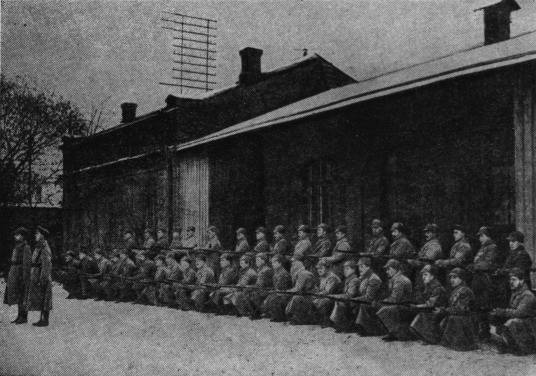
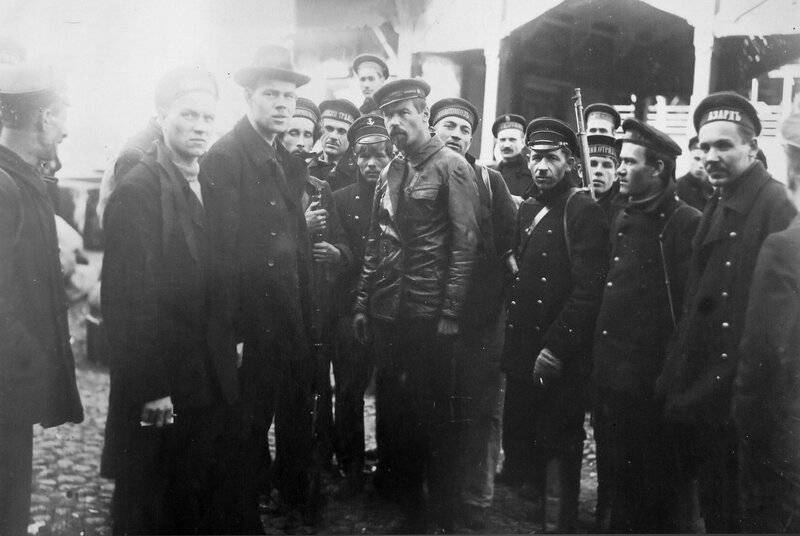
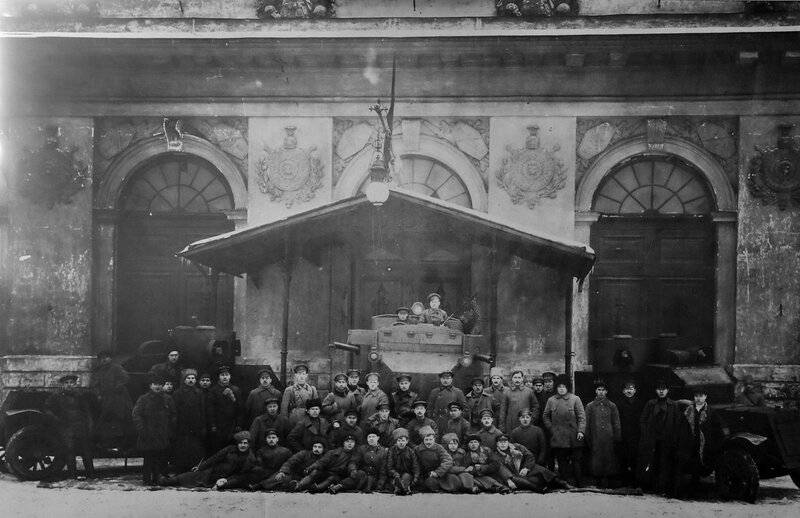
"Glorious May"
13 May 1919, the units of Rodzianko broke through the defense of the Reds near Narva and entered the Petrograd province. Whites began to bypass Yamburg. One brigade of the Reds was defeated and retreated. May 15 white entered Gdov, 17 th - in Yamburg. May 25 Balakhovich detachment broke into Pskov, followed by the Estonian division of Puskar.
Thus, the red front cracked. Red units retreated to Luga or surrendered. In late May - early June 1919, the Northern Corps reached the approaches to Ropsha, Gatchina, Krasnoe Selo and Luga. It took White 10 days to establish its control over an area of 160 thousands of square kilometers.
However, White did not develop an offensive. There are several reasons for this. First, the Northern Corps was too small to storm such a huge city like Petrograd. But Estonians were not going to participate in such an operation. At the same time the white command did not have supplies for the supply of the city. Their reserves were almost exhausted. The Estonian government, as soon as the whites entered the territory of Russia, removed them from the supply.
The white hull was already exhausted in the first battles. Whites got a bridgehead base, a significant territory with the cities of Pskov, Gdov and Yamburg. However, the white command could not form a significant army here. These were not the rich lands of the Don, Kuban, or Little Russia, the poor villages of Pskov, on which the war had already passed twice. That is, a significant change for the better in the field of human and material resources has not happened. Estonia blocked the supply, while the British only made promises. Could not capture and rich trophies. In the Pskov region there were no such rich warehouses of the old army, as, for example, in Little Russia and the North Caucasus.
Secondly, the corps command was confident that time was playing for them. And the grounds for this were. 13 June 1919, anti-Bolshevik forces captured the Krasnaya Gorka fort and the Gray Horse battery. And this was the core of the Kronstadt defense system of Petrograd from the Baltic Sea. However, the British did not use this favorable moment and did not support the rebels. Soon the ships from Kronstadt with a powerful shelling forced the rebels to leave the forts.
Thirdly, the whites hoped for more substantial support of the British fleet and the offensive of the Finnish army against Petrograd. But with the Finnish government did not agree. And at the elections that took place soon in Finland, Mannerheim's opponent Stolberg won, he became the first president of the Finnish state. As a result, the war party led by Mannerheim lost.
Meanwhile, the Soviet command, party and military leaders took emergency measures to restore order. A commission led by Stalin and the chairman of the All-Russian Extraordinary Commission of Peters was rushed from Moscow, and order was quickly established in the city. The Chekists suppressed the enemy underground, which was preparing a rebellion. In Petrograd, additional party, Soviet and worker mobilizations were held, new units were formed. Reinforcements were pulled from Central Russia. The forces of the 7 Army were regrouped, reserves were created, and material resources were accumulated. Improved intelligence. Red Army soldiers and sailors suppressed the uprising of "Red Hill" and "Gray Horse". By the end of June 1919, the Red Army was ready for a counterattack. In August 1919, the Reds beat off Yamburg and Pskov.
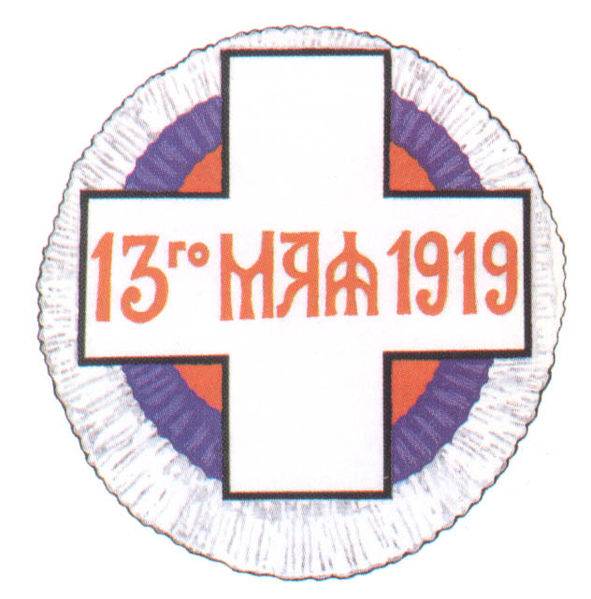
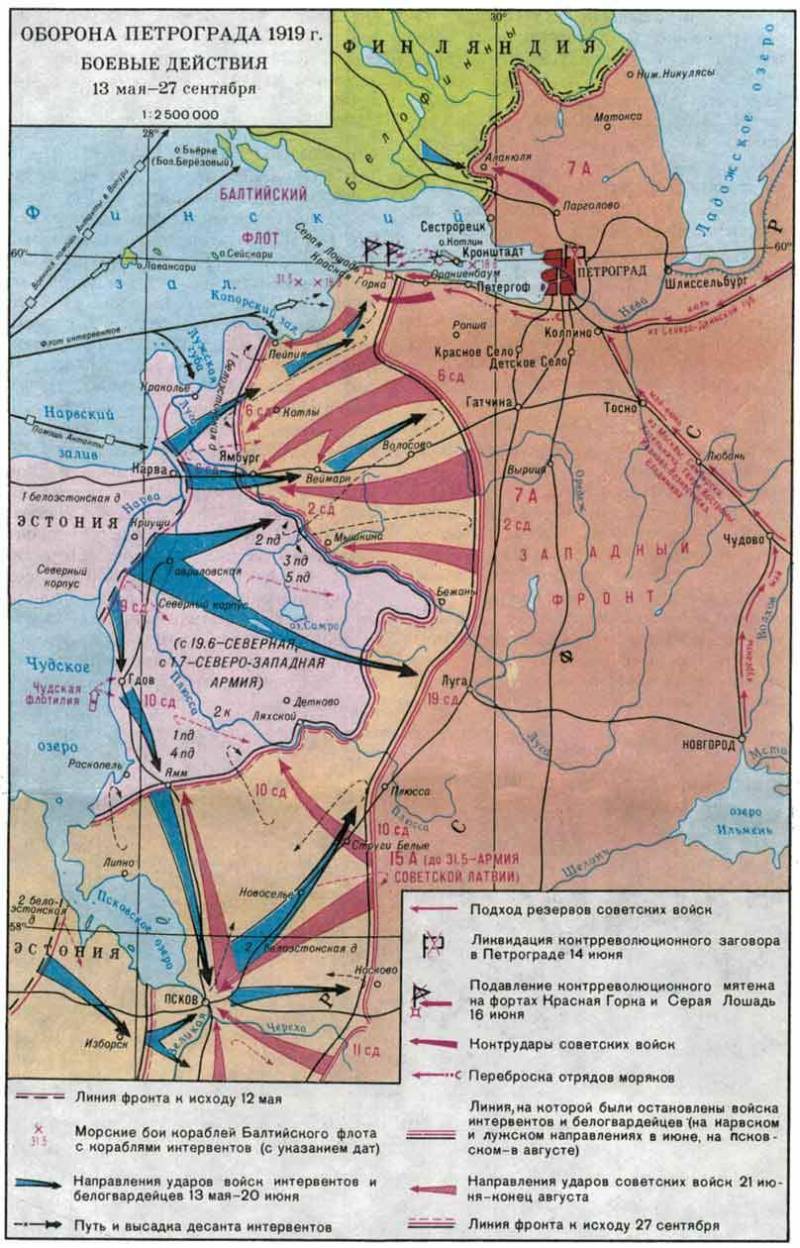
Information